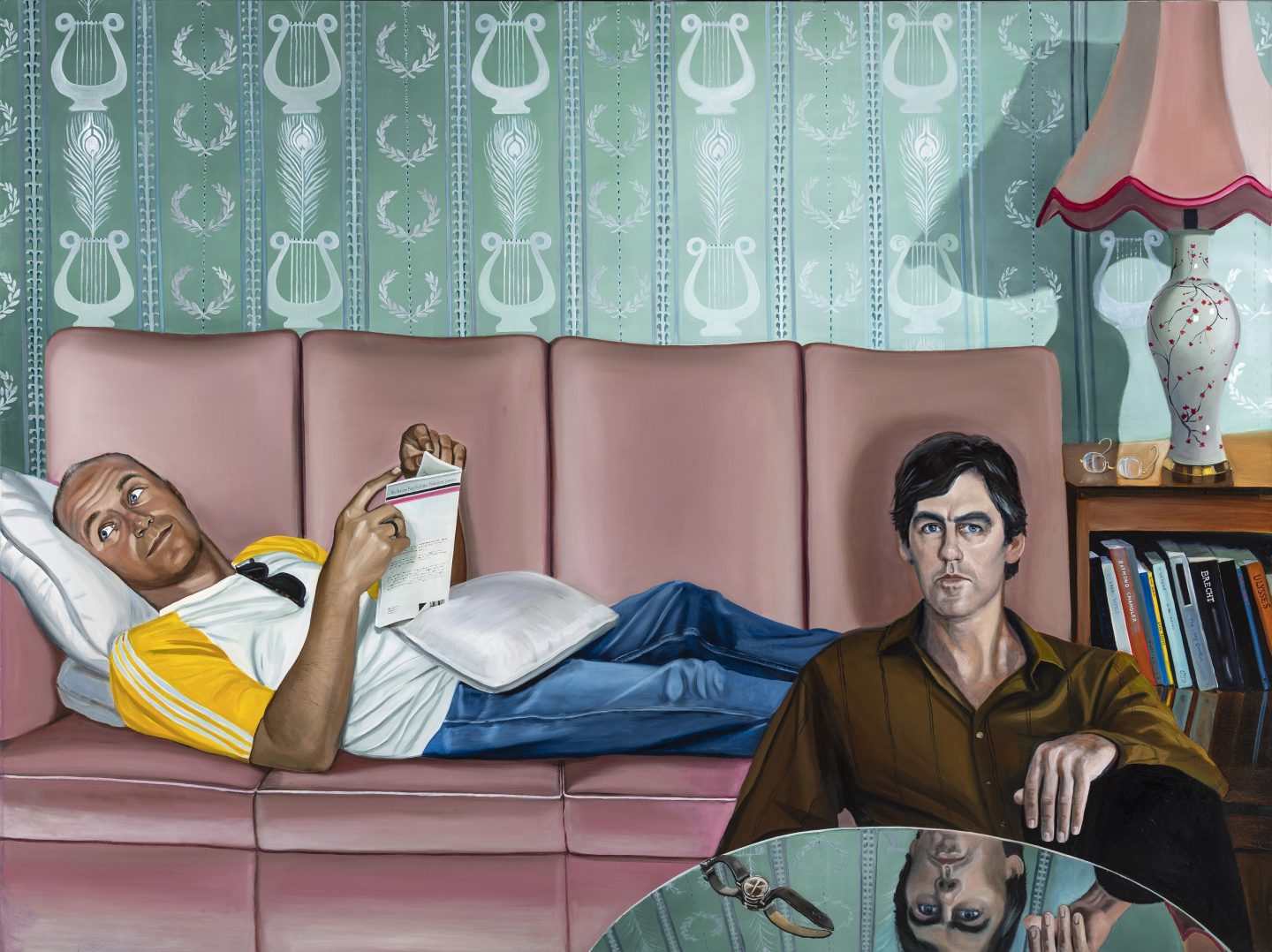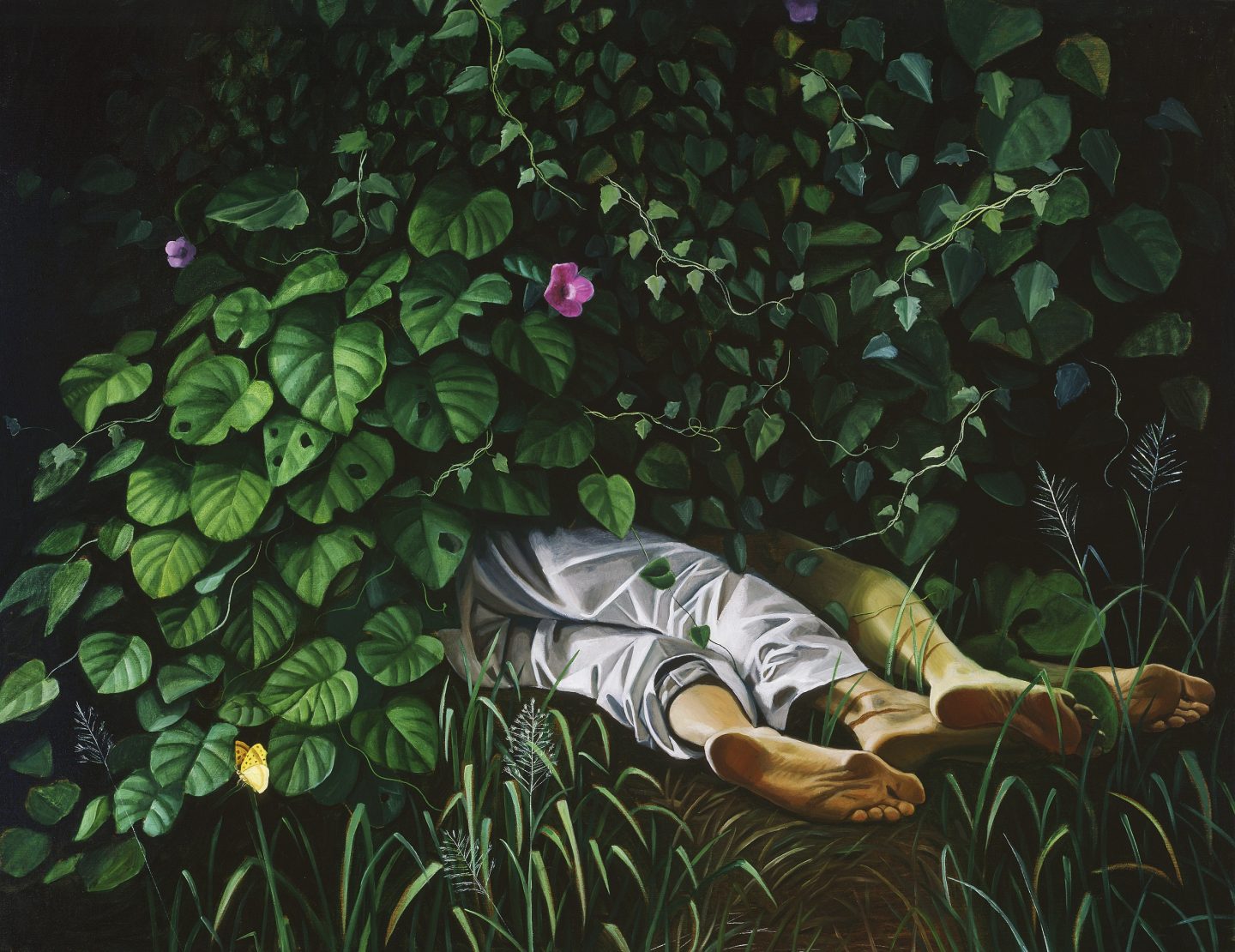When it launched at the Queensland University of Technology (QUT) Art Museum in 2019 Strange Ways was the first major exhibition celebrating Anne Wallace’s contribution to Australian art. Following its run at QUT the exhibition was downscaled and plans were in place for it to be exhibited at the Art Gallery of Ballarat before it fell victim to COVID-19 closures. It has now landed in Adelaide at the Samstag Museum of Art.
The curator of Strange Ways, Vanessa Van Ooyen, first encountered Wallace’s work in the 1990s at the Museum of Contemporary Art’s Primavera exhibition and has been captivated by her work ever since. “She has been a quiet achiever who has been constantly working. Since her first exhibition at Darren Knight Gallery in 1993 she has held a number of solo exhibitions and being involved in notable group shows,” says Van Ooyen.
Wallace’s paintings draw on pop culture including literary novels, music and film, and while much of her work is influenced by time living in London and Paris, and others reference locations in the United States, she was born and raised in Brisbane in the 1970s making her a quintessential ‘Queensland artist’.
 Anne Wallace, The Go-Betweens, 2001, oil on canvas.
Anne Wallace, The Go-Betweens, 2001, oil on canvas.
“Anne has been an original voice in painting – she was doing realism at a time when it was really unfashionable,” explains Van Ooyen. “When she came out of art school painting was the exception, it was all about video and installation but she held steadfast to her painting.”
The original exhibition at QUT featured more than 80 works spanning three decades, sourced from public and private collections. While this latest iteration at Samstag is a condensed version of the show, it still includes significant works from the early 1990s through to the current day.
Looking at Wallace’s work, it is clear that her paintings have become more nuanced and complex. Works have many layers of meaning, encouraging audiences to look below the surface, beyond the seemingly mundane, to reveal what’s lying outside the canvas.
In 1993 Wallace was awarded the Samstag International Visual Arts Scholarship, enabling her to travel to London to complete her Master’s degree at the Slade School of Fine Art which had a huge impact on her practice.
 Anne Wallace, Morning Glory, 2004, oil on canvas.
Anne Wallace, Morning Glory, 2004, oil on canvas.
“I think my work really changed after I studied overseas in London,” says Wallace. “The biggest difference in the earlier work is the colour. When I was in London I went technicolour in a way and used a lot of artificial colours, whereas earlier work used a toned-down palette.”
Over time Wallace has developed a unique style and practice creating paintings that resemble film stills, exploring themes of love, anxiety, childhood and the search for identity. She depicts scenes that capture a moment in time where something is about to happen or has just happened. It’s this moment of tension along with the combination of the real and the unreal in Wallace’s paintings that make them both compelling and unnerving.
“The basis of my practice is about using clear representational imagery, which is usually tied in with the idea that painting and works of art can easily be understood,” explains Wallace. “I’m using that in a way that is deliberately not supplying any straightforward meaning to create an experience that is part of life.”
Strange Ways highlights Wallace’s contribution to contemporary Australian art and helps mark her place in its history.
16 October – 28 November
Anne Wallace: Strange Ways
Get the latest from The Adelaide Review in your inbox
Get the latest from The Adelaide Review in your inbox